
There are some directors you think of when certain movie genres come up: Alfred Hitchcock mastered the psychological thriller, Akira Kurosawa cornered the market on the samurai epic, Sergio Leone dominated the spaghetti western—and John Hughes wrote the book on movies about teens.
Of course, Hughes branched out into other genres too, including films about the holidays and live-action movies where a dog is the main character (it’s a bigger genre than you might think).
But he’s definitely best known for his '80s teen dramas and comedies. His movies gave voice to a demographic that often felt unheard, and portrayed all the spontaneous-dancing highs and trapped-in-detention lows of what it meant to be a teenager growing up in the Chicago suburbs in the 1980s.
Though Hughes only directed eight films, he wrote nearly four times that many. In honor of the maestro of teen cinema, here’s a selection of his finest output.
Feel free to transfer your gum to the underside of the nearest writing surface and hit pause on that Barry Manilow record as we look at the 10 best films written or directed by John Hughes.
10. The Great Outdoors (1988)
It’s hard to disappoint when you’ve got John Candy as your lead and the Wisconsin wilderness for a backdrop.
As you’d expect, Candy is a delight as the wholesome family man just looking to relax in fresh air when his getaway is interrupted by the in-laws: a smooth-talking Dan Aykroyd and a brand-new-to cinema Annette Bening, who seems to have perfected the condescending laugh from her debut role.
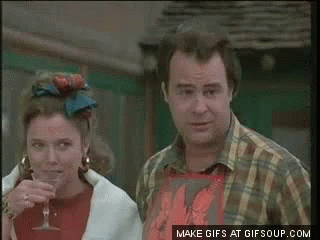
While it’s a pleasure to hear Candy and Aykroyd trade barbs over a couple of brewskis by the lake, the drama is mostly kept surface level and the plot is little more than a series of encounters with bears, powerboats, and mouthwatering 96 oz. steaks—and that’s definitely a good thing. What more do you want out of a film called The Great Outdoors than to see Candy and Aykroyd suit up in sports gear to take on a bat that gets in the house?

Sure, some of this feels like it came from an unproduced Vacation script and there’s a subplot or two that could have been better developed, but the film still has its own personality and charm, making for good breezy summer fare.
The sight of Candy driving two actual bears around on his Jeep Wagoneer is worth the price of admission alone.
9. Some Kind of Wonderful (1987)

Some Kind of Wonderful tends to get left out of conversations about Hughes’ films, and it’s no great mystery why: It’s basically a repeat of Pretty in Pink with the genders swapped (two girls vying for the affections of one guy this time), not to mention it’s as good an example as any as to why Eric Stolz was replaced by the more animated Michael J. Fox on Back to the Future.
It’s not a perfect film … but it is the last of Hughes’ teen films and definitely not a bad way to close out the era.
In Pretty in Pink 2: Prettier in Pink, Stolz’s blue-collar artist type pines after Marty McFly’s mom, Lea Thompson (in what I’d like to think was a small prank played by the movie gods), while his tomboy best friend, Mary Stuart Masterson, plays drums and pines after him. It’s a classic case of chasing after the wrong person while the right one is right there under your nose the whole time.
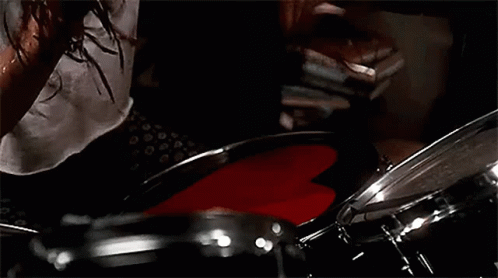
While the chemistry may be hard to see between Stolz and Thompson, Some Kind of Wonderful thrives on the performances of its supporting players. Masterson really makes you feel the agony of her character’s pent-up love for her friend in some very subtle and very cool ways, and Elias Koteas (whom you probably know best as either Casey Jones in the Teenage Mutant Ninja Turtles movies or as the whacko car crash addict in Cronenberg’s Crash) plays the most likable redeemed bully since John Bender in The Breakfast Club.
The story may be familiar and you have to seriously question whether its somewhat forced romance is built to last, but you can’t deny that that Celtic-flavored rendition of Elvis Presley’s “Can’t Help Falling in Love” that plays the film into the end credits is totally boss.
8. Planes, Trains and Automobiles (1987)
Planes, Trains and Automobiles feels like the result of two brilliant ideas converging at once: the realization that no one had ever made a Thanksgiving movie before and the certainty that sitting Steve Martin and John Candy next to each other for two hours would pay off in comedic dividends.
It’s a classic buddy picture with Martin playing the peevish and harried marketing executive and Candy playing the motormouthed and imposing shower ring salesman who gets on his nerves to no end. You wouldn’t want to spend a plane ride with either one of these two—let alone subsequent journeys by train and automobile—and yet, we happily join Martin and Candy for the ride knowing Hughes won’t let their destinies lie in disaster.
While it’s the comedy that bears us through the burned-up rental cars and Martin’s fascinating tirades (one of which directed at an unassuming desk attendant singlehandedly earns the film its R rating), it’s the human drama that has undoubtedly turned this film into a seasonal classic.
As outrageous as they are, Martin and Candy never descend to stock types and instead allow humanity to shine through in their increasingly disastrous altercations. It’s a film that veers dangerously close to tragedy before wrenching the wheel back in an uplifting direction and in true Hughesian fashion leaving both travelers with something more than safe arrival in the end.
7. Weird Science (1985)
Man, I don’t know what kinda chips they were putting in computers in the 1980s where turning one on felt like stepping into some limitless virtual reality, and by feeding it magazine clippings while conducting a Barbie doll seance you could conjure an ultra-smart, ultra-cool British supermodel inside your bathroom, but…they sure don’t make ’em like they used to.
Weird Science was the one time out of all his teen flicks that Hughes ventured into science fiction. It was a chance for him to go totally bonkers with the special effects and stunts, from turning Bill Paxton’s flattop-rocking Chet into a blob monster to blowing a piano out of a chimney and through a gazebo. The kitchen turns blue, the house party gets crashed by a post-apocalyptic biker gang straight outta Mad Max, and a Pershing missile pushes up through the floor of a bedroom. All because…why not?

It’s the wildest Hughes ever went with a film, and yet he still anchored what story there is in the coming-of-age wisdom he’s known for. While Anthony Michael Hall and Ilan Mitchell-Smith are goofy and likable as the science-meddling teens, and Paxton basically plays Private Hudson 1.0 (with a few dozen more loose screws), this film belongs to Kelly LeBrock’s computer-made woman. She radiates confidence, cool, and charm and quickly transcends the purpose behind her creation to teach the boys how to be confident and have lives of their own.
It wouldn’t be a John Hughes film after all without a heartwarming dose of enlightenment behind the pop soundtrack and adolescent antics.
6. Pretty in Pink (1986)
From the outrageous fashions to the soundtrack packed with gems by the Psychedelic Furs, New Order, and Orchestral Manoeuvres in the Dark, everything in Pretty in Pink feels so much bigger and more important than it has any right to be.
What could have been a very superficial story (spoiler alert: test audiences caused the filmmakers to chicken out and throw Molly Ringwald’s Andie together with the cute, rich guy in the end) instead reads as a tale of teens burdened in equal measure by their quiet desperation and their loud passions as they spiral through their high school careers toward either glory or heartbreak. Only John Hughes, man…
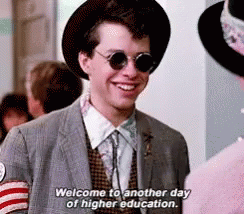
Everybody fits so comfortably into their roles and plays their characters with such heartfelt passion the film manages to be both a hyper-stylized portrait of teen drama and right on the money.
As with Some Kind of Wonderful, the supporting players are really what make the picture in the end. Annie Potts’ straight-shooting, super chill record store owner is as colorful as the wigs she swaps into from scene to scene, and it would take a pretty cold heart to not feel for Jon Cryer’s lovestruck best friend Duckie as he rolls in agony on Andie’s bed or to smile endlessly as he lip-synchs his way through an entire Otis Redding song like nobody’s looking.
5. Vacation (1983)
When it comes to the amount of dark humor Hughes gets away with in the first Vacation film, I think there’s an analogy to be found in the scene where Clark Griswold forces a Walley World employee to take his family on a day of fun through the closed park at gunpoint.
If you’re going to go there at all, you kind of have to go all the way with it, and that’s just what Vacation does, leaving poor Dinky somewhere back on Route 66 and Aunt Edna sitting in the rain. For a comedy, the film sure hits you with the heavy stuff. But those extremes are also what elevate Vacation above your average road trip comedy and what push Clark’s campaign for fun from reasonable ambition to sheer lunacy.
Working from one of Hughes’ earliest (and wildest) scripts, Harold Ramis managed to bring out the very best in Chevy Chase’s acerbic nuttiness over the course of the Griswolds’ oddly compelling tour of Middle America and the Southwest. What makes it all work so well is just how much we buy into everybody’s motivations.
Yes, Clark is wildly and dangerously over-the-top, but we believe in the film because Clark believes in the triumph of fun over reason and common sense—and the relentless eye-rolling, sighing, and groaning of the wife and kids are balanced in the end by the genuine fun everybody winds up having along the way.
4. Christmas Vacation (1989)

After road-tripping across North America in film one and train-zipping about Europe in film two, the chaos of the holidays turned out to be the perfect comedic playground for Chevy Chase’s manic dad blindly battling the odds in search of the perfect family experience.
What could be more terrifying after all after visiting Cousin Eddie at his Kansas farm than having Cousin Eddie roll up on your lawn in his trailer home?
Next to the trials and tribulations of teen drama, the holidays are where Hughes always seemed most in his element. Combining that setting with the colorful cast already set up in the first two Vacation films turned out to be a real recipe for success. Joining the regulars (Chevy Chase, Beverly D’Angelo, and Randy Quaid) are indie darling Juliette Lewis and The Big Bang Theory’s Johnny Galecki stepping in as the perpetually transferable Griswold kids—and Seinfeld’s Julia Dreyfus railing from her window as Clark’s greatly distressed neighbor.
While Hughes milks all the most obvious holiday hallmarks for all they’re worth, from overcrowded sleeping situations to overcooked turkeys to over-juiced Christmas lights, all he really needed to do was set a squirrel loose in the house to turn Vacation the Third into a perennial Christmas classic
3. Home Alone (1990)
Speaking of John Hughes and Christmas classics, it doesn’t get much more festive or more classic than Home Alone.
Whether cooking up a dream girlfriend with a computer or letting his leads play out the ultimate day of hooky, Hughes was the master of putting universal fantasies on film. And as far as fantasies go, it doesn’t get much better than a kid having the run of the house for Christmas vacation.
Ice cream sundaes for dinner? Nobody to tell you you can’t watch gangster pictures like Angels with Filthy Souls? It’s like being an adult without responsibilities!
But 8-year-old Kevin McCallister soon discovers that being home alone comes with its own responsibilities (like shopping and having to brave the basement boiler) and that the solo life he yearns for is not necessarily all it’s cracked up to be.
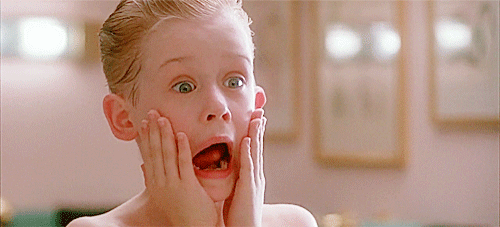
Macauley Culkin had a fantastic talent for delivering lines just like a little adult. There was no better choice for the eyebrow-popping, aftershave slapping, wise-beyond-his-years Kevin McCallister.
Throw in Joe Pesci and Daniel Stern as the bungling burglars he has to defend his home from, a touching message about the spirit of the holidays courtesy of some weird old dude with a snow shovel, and John Williams’ warmest score ever (seriously, you could wear “Somewhere in My Memory” like a blanket), and you’ve got one of the most beloved Christmas films of all time.
2. Ferris Bueller’s Day Off (1986)
Whenever those two valets launch over the hill in Cameron’s dad’s Ferrari I always wonder two things: a) “Why are they playing the Star Wars theme?” and b) “How did they ever license it?”
Just as quickly I realize I don’t care. The moment is pure cinematic bliss and a perfect example of the goofy, anything-goes approach that solidified Ferris Bueller’s Day Off as one of the greatest comedies of the '80s.
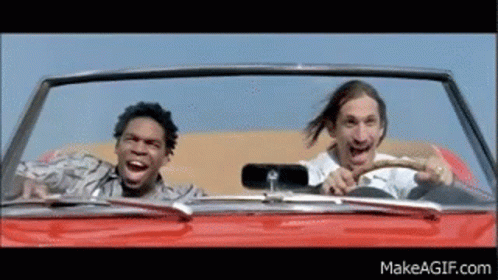
It’s one of two films where it seems everything Hughes ever wanted to do or say in a teen film came together in sheer absolute perfection. Ferris Bueller’s Day Off was of course the sillier of the two, but even in Ferris’s capricious escapades and cheeky fourth-wall-breaking asides, you can find Hughes handing his audience solid-gold nuggets about what really matters in life. The beauty of it all is that these lessons arrive via the ultimate day of hooky.
For one beautiful day, Ferris Bueller gets to break all the rules and drag his down-on-himself pal and his girlfriend all over Chicago.
There’s Wrigley Field, the Sears Tower, the Museum of Contemporary Art, a German heritage parade, fine dining, mocktails by the pool… they do more in a day than most are able to cram into a week’s vacation.
What’s more, Ferris gets his friend to finally hash things out with his overbearing father, he proposes to his girlfriend, races through backyards to the English Beat’s “March of the Swivelheads”, and successfully slips back into bed before his parents get home.
Cameron Frye may have been joking when he said, “Ferris Bueller, you’re my hero,” but this film is a joyful inspiration nevertheless when it comes to the value of slowing down to enjoy life every once in a while.
1. The Breakfast Club (1985)

You really wouldn’t think eight hours in detention would make for that great of a film. In fact, Hughes’ sophomore directorial effort very easily could have turned into an exercise in boredom as daunting as that faced by the film’s five Saturday-deprived leads.
Instead, the characters turn the procedural discipline they’ve been slapped with into world-shattering group therapy and the film becomes a fascinating exploration of the pressures heaped onto teens by their parents, their peers, and themselves.
The Breakfast Club is the one occasion Hughes would give equal voice to kids from all walks of school life: the jock (Emilio Estévez), the princess (Molly Ringwald), the nerd (Anthony Michael Hall), the rebel (Judd Nelson), the basketcase (Ally Sheedy).
Over the course of the most important Saturday of their lives, these teens realize that if no one else will hear them they can be heard by each other, and they gradually begin to break down the labels that had kept them apart in the halls.
In the end, no matter what barriers they break through, the uncertainty of everybody’s Monday still lies ahead. But the closing lyrics of Simple Minds’ “Don’t You (Forget About Me)” lead us to think that these five just might make it.
In the event I stuttered, The Breakfast Club is without question Hughes’ most profound work—a product of the '80s, a film for the ages.
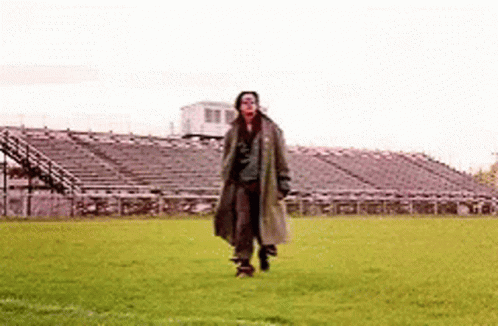
About the author: Mike Ettel is a freelance journalist who enjoys watching, reading, and writing science fiction. He’s still waiting for the day dinosaur cloning is made a reality.
Unless otherwise noted, all images copyright relevant production studios and distributors. Intended for editorial use only. // Found at Moviestilldb.com
Share This Article
Related Topics
Read Next

November 23rd in nerd history: It's bigger on the inside
By Classic Nerd | November 23, 2023
The 8 best TV theme songs from '80s action shows
By Classic Nerd | March 20, 2024
November 13th in nerd history: I got you, babe
By Classic Nerd | November 13, 2023
September 11th in nerd history: Be excellent to each other
By Classic Nerd | September 11, 2023
10 movies from the '90s that got the future wrong
By Jesse Lennox | August 8, 2023
Final Jeopardy! from January 9 1990
By Classic Nerd | January 9, 2024
August 3rd in nerd history: Let's hit the Radio Shack, shall we?
By Classic Nerd | August 3, 2023
September 8th in nerd history: Where no one has gone before
By Classic Nerd | September 8, 2023Want More Nostalgia?
Check out our other quizzes and random trivia questions!